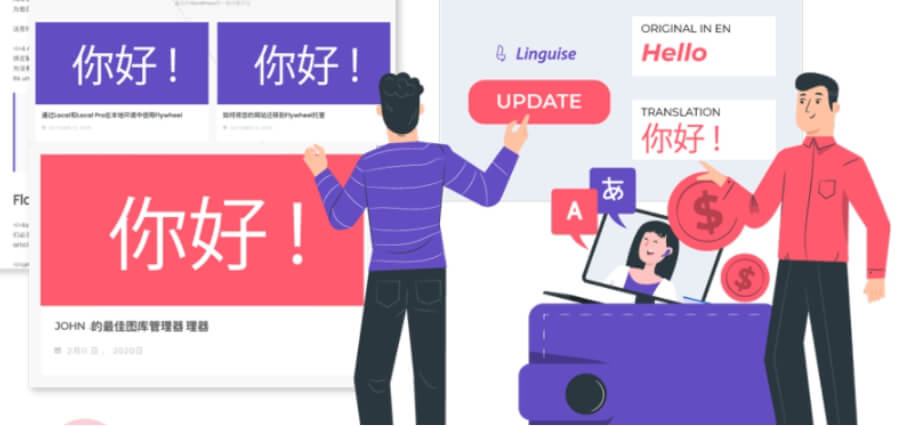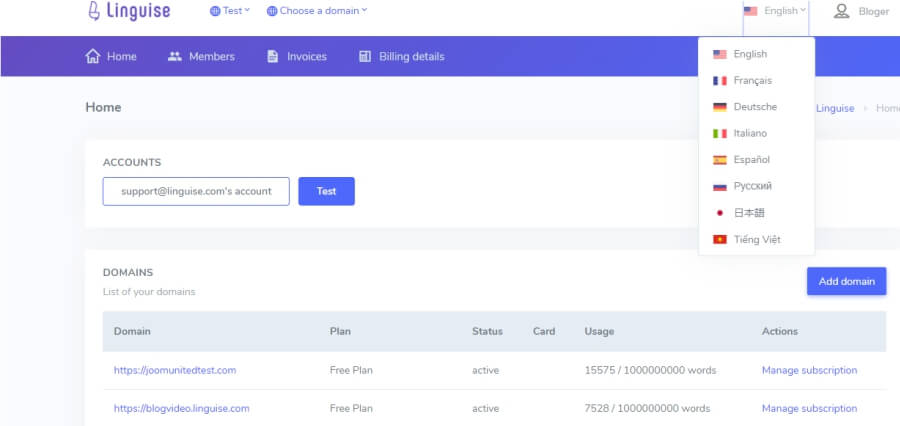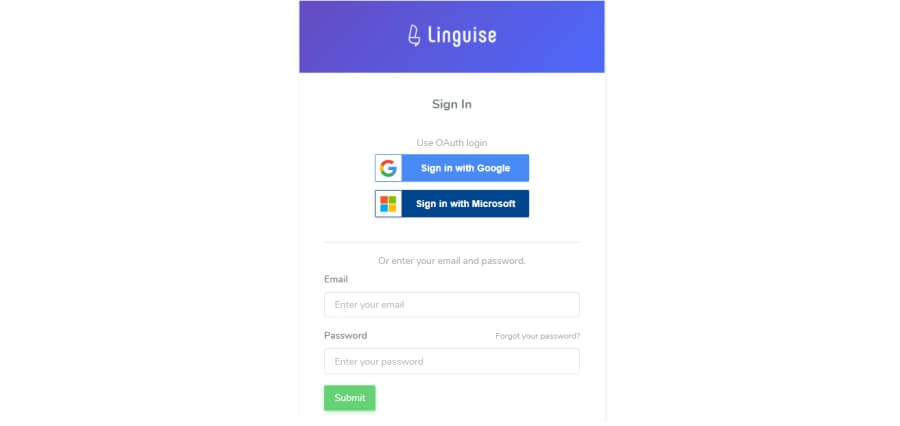Expanding your WooCommerce store to multiple languages to target international regions is a great way to expand revenue from your business. For this reason, you need to select the best option to completely and accurately translate your online shop to give your international customers a seamless experience.
Since automatic translation services have taken over, the availability of numerous plugins in the market makes it quite challenging to determine which one suits you. It is also a difficult decision because this plugin will market your website at the front end, and you only have one chance to get it right.

Worry no more. We have compiled a well-researched guide of what you should look for in a multilingual translation plugin. Based on these facts, Linguise is the ultimate plugin that checks all the boxes. We’ll also show you how you can set it up.
In this post, we’ll focus on:
- Important features to look for in a multilingual translation plugin
- Which plugin is the best to create a complete multilingual store
- How to set up this plugin
What are the important features to look for in a multilingual translations plugin?
With so many translation plugins available in the market, here is a list of important features to guide your choice.
1. Quick deployment and ease of use
The main reason websites have moved on from manual translations is that it takes a lot of time to get it up and make it run. Therefore, what would be the point of selecting a translation plugin that takes a lot of time to deploy? Exactly, it makes no sense at all.

For ease of use, opt for a translation plugin that has a visual translation UI. A visual translation UI bears the following benefits:
- Quick Editing: Suppose the service has made a translation error (after all, machines are not perfect); you don’t need to search through multiple multilingual pages. You just select the specific language and make edits quickly.
- Ease of use: When handing outsourcing translation editing to a third party, they can easily pick it up.

For example, editing translations from the front-end is easy, right?
2. Cost-effectiveness and availability of a free trial
The majority of automatic translation services have a cost advantage over manual translations. In the same way, a good translation plugin offers a cost advantage over other translation plugins.
You’ll be able to save costs and focus it on investment elsewhere.
You also need a service that offers a free trial period (preferably one month) so that you can get a sense of the quality of service you’ll be getting. In this way, you will know exactly what you’re getting yourself into before you decide whether to pay for the service or not.

3. Complete website translation
Various parts of your WooCommerce shop need to be covered for it to be fully translated. These are:
- Product titles, descriptions, and breadcrumbs
- Dynamic elements of the checkout page
- Billing details
- All buttons (shop now, add to cart, etc.)
- Text on product images
- Menu items
- Tags, the list goes on.

A translation plugin needs to cover all these areas. Every part of your website needs to be translated to localize your products or services to your customers. This gives them a better experience and also plays a role in improving your SEO rankings.
4. Search engine optimized translations
Getting multilingual SEO right can be challenging. You’ll be creating multiple language-region versions of pages on your website. You also need to inform Google (the leading search engine) which pages to display for given languages in specific regions. This process is complicated if you have a large website intending to target numerous regions.

Therefore you need a translation plugin that:
- Enables you to generate indexable pages containing URL variants of your original URL, for example, attaching sub-directories to your gTLD (example.com/en-us/).
- Translates metadata for SEO, including URL slugs, meta-descriptions, SEO titles, etc.
- Translates your sitemaps which lists URLs for your pages and their alternate versions in different
- Integrates with your SEO plugin, such as WP Meta SEO.
5. Automatic translation with manual translation editing
Although automatic machine translation is the most convenient method to translate your WooCommerce shop content, it often makes mistakes on some parts beyond machine capabilities. Technical terms, puns, and cultural references are some of this content.
You need a plugin that automatically translates your content while allowing an editing option to revise and refine translations made by the machine. Additionally, the plugin should allow you to invite experts to edit the languages you don’t speak.
6. Performance and page load times
As an e-commerce store owner, the performance of your website is extremely important to your value user experience. Some plugins have been criticized for making websites much slower to respond. A slow website results in an unpleasant user experience, which may in turn increase the bounce rate and lower your SEO rankings.
When choosing a multilingual translation plugin, you would want to avoid this. You need a plugin that will instantly translate your website’s content without causing an increase in page load times.
7. Compatibility with your themes and plugins
If you’ve been using WordPress for a while, you know that one of the most frustrating experiences is installing a plugin incompatible with your current setup. Since the plugin does not work with your setup, you will have to choose between adjusting your setup and abandoning the plugin. Both are undesirable choices.

When choosing a translation plugin, you need to select one that is first compatible with WooCommerce and your preferred theme (Astra because it is very common). You might also opt for one that is compatible with your page builder (Elementor or Divi), so that it is synonymous with your design.
8. SEO analytics across different languages
Although this is not top of the list, SEO analytics features can be a great tool to have in your translation plugin. A detailed analysis of the clicks your website receives across the multiple languages you’re targeting gives you an insight into where you’re performing well in SEO. This can be useful in allocating resources to make up for this traffic.

Now that you know what you need to look at when selecting a multilingual translation plugin for your WooCommerce store let’s see which one is the best.
Which WooCommerce Translation Plugin is the Best for your Multilingual Store?
Linguise is a neural network translation service capable of fulfilling all the above criteria while providing more. Let’s have a look at how it does this.
1. 15 minute deployment time
The process of setting up Linguise from registration to automating translation takes no more than 15 minutes. Once you’re done, translation is instant.
2. Easy to use UI
Linguise has an interactive UI on its dashboard from which you can do anything: live translation editing, inviting experts to edit translations, configuration settings, etc.

3. Cost-Effectiveness
Linguise only costs 12% of manual translations to get a 100% translation quality. It also has a one-month free trial period to get a sense of the type of service you will be getting with it.

4. Linguise translates all of your website’s content
Once you set up Linguise and load the language switcher, all you have to do is select the language you want the website to be translated to. All of the content will be translated. There are some parts that may elude the software; for this, there is a live editor. You can use this tool to edit translation as you watch the changes unfold live.

For the languages you don’t speak, you can invite experts to do this for you.
5. Search engine optimized translations
Linguise partners with your SEO plugin to generate indexable whole pages with their own URLs to enable search engines to rank them. The rel= “alternate” hreflang tag attribute is implemented using XML sitemaps. This informs Google search engine of the availability of alternative pages and which page to display for a given language.
rel=”alternate” hreflang=”lang_code“
6. Compatibility with themes and plugins
Linguise is compatible with all themes and plugins on WordPress. This includes WooCommerce. This means that you won’t have to alter your setup to accommodate it.
How to set up Linguise to automatically translate your WooCommerce store
Unlike conventional WordPress plugins, setting up Linguise begins from the service’s dashboard on the official website. You can quickly get it started with 15 minutes at most. Let’s see how.
Setting up Linguise involves these four steps.

Register on the official site
1. Click on this link to go to the official site, com, enter details on your email and a password, and submit.

2. After creating an account, click on Add Domain on the dashboard.
Domain API Key Generation
The purpose of the domain API key is to uniquely identify you as the owner of a given Linguise account. In this way, you’ll be able to login with your credentials to your personal account. Since this key serves to verify your ownership of an account, it will assist the service in accurately tracking changes in terms of payment, number of translators, etc.
Paste your website’s URL on the add domain page and select the original language and other languages you intend your website to be translated into. You can choose from as many as 80 options!

3. You can select the pages you want to be translated and then click Next to generate your API key.
After account creation, you are granted a 400,000-word translation quota totally free. However, this is a trial period, and the service is not free forever. After this, you’ll start incurring charges at an affordable rate like we mentioned above.
4. You will find a cryptographically generated key (API Key) that you copy to your clipboard on the next page.

Extension download and installation
5. Click on the extension download link to download a zip file of the plugin. Go back to your website’s dashboard and under Plugins, select Add New>Upload>Choose File.
6. Select the extension zip file and click Install now>Activate.

7. Click on the Linguise icon on the left sidebar menu and paste the domain API key and click on apply. It will automatically retrieve the configuration you set for your domain on Linguise dashboard.
 Loading the Language Switcher
Loading the Language Switcher
8. On the left sidebar, go to Appearance>Menu. Check the box that says Linguise Languages> Add to Menu and then save changes, and you’re done!
A video illustration of this process is available here.
As a WooCommerce store owner, you need to be careful while picking a translation plugin for your multilingual store. The criteria above should be enough to guide you to a good translation plugin, but there’s none better than Linguise out there. This plugin checks all the boxes while still offering so much more.
| Click Here For More News and Blog |


